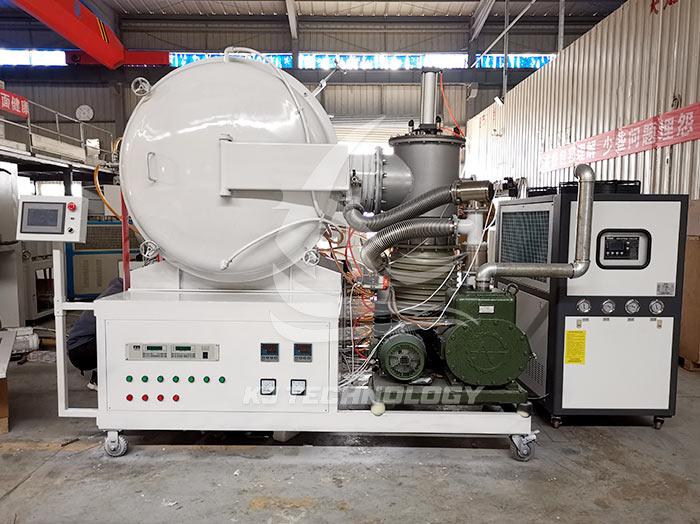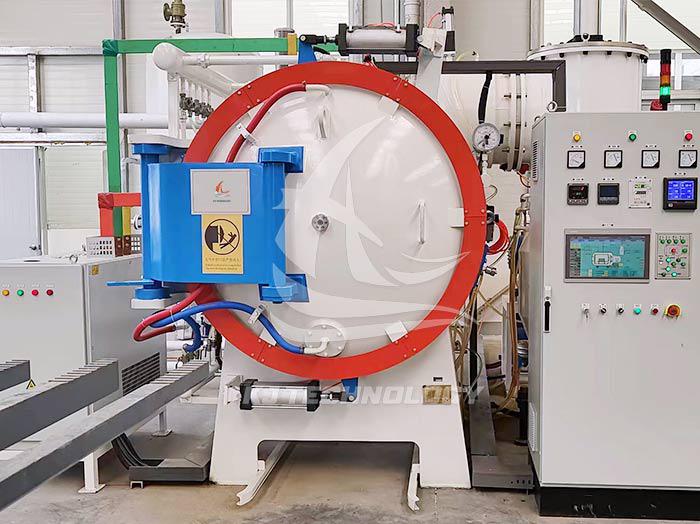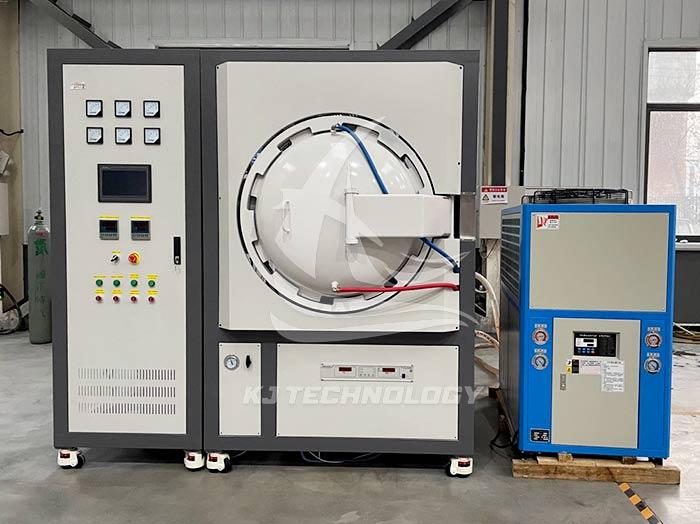What processes can vacuum graphite high-temperature furnaces be used in?
 11-06-2025 Author: KJ technology
11-06-2025 Author: KJ technology
The vacuum graphite high-temperature furnace is widely used in the following process fields due to its high-temperature performance, vacuum environment control, and material compatibility advantages:
1. Metal material processing
Heat treatment and alloying
Used for annealing, quenching, tempering and other heat treatment processes of metal materials, as well as alloying treatment, to enhance the strength, hardness and corrosion resistance of metals. For example, in the aerospace field, high-performance alloy components are prepared by preventing metal oxidation through a vacuum environment.
Powder metallurgy and sintering
In metal powder metallurgy, the vacuum graphite high-temperature furnace provides an oxygen free environment, avoiding powder oxidation, promoting the bonding between metal particles, and improving material density and mechanical properties.
2. Preparation of Ceramic Materials
Sintering and Crystallization
Used in the sintering process of ceramic materials, ceramic particles are densified at high temperatures to improve the strength, hardness, and thermal stability of the material. For example, high-performance ceramics such as zirconia and silicon nitride are widely used in fields such as electronics and aerospace.
Graphitization treatment
During the graphitization process of ceramic materials, the vacuum environment promotes the rearrangement of carbon atoms, forming graphite crystal structures and enhancing the conductivity and thermal conductivity of the material.
3. Electronics and Semiconductor Industry
Preparation of Semiconductor Materials
Used for the growth and heat treatment of semiconductor materials such as silicon crystals, silicon carbide (SiC), gallium nitride (GaN), etc. Vacuum environment prevents material oxidation, ensures high purity, and enhances the performance of electronic components.
Graphitization treatment and sintering
In the manufacturing of semiconductor devices, vacuum graphite high-temperature furnaces are used for graphitization treatment to improve the conductivity and thermal stability of materials, and are also suitable for sintering ceramic packaging materials.
4. Development of new energy materials
Preparation of Negative Electrode Materials for Lithium Batteries
By using a high-temperature vacuum environment, impurities in the negative electrode materials of lithium batteries (such as artificial graphite and natural graphite) are removed, promoting the ordering of carbon structure and improving the charging and discharging efficiency and cycle life of the battery.
Fuel cell component processing
In the preparation of proton exchange membranes, electrodes, and other components of fuel cells, a vacuum graphite high-temperature furnace provides a high-temperature oxygen free environment to ensure stable material properties.
5. Chemical and Materials Science
High-temperature chemical reaction
Used for processes such as pyrolysis and polymerization of organic materials, vacuum environment prevents side reactions and improves product purity. For example, preparing high-performance carbon fibers or graphene.
Synthesis and Research of New Materials
In materials science research, vacuum graphite high-temperature furnaces are used to synthesize high-temperature ceramics, superhard materials, nanomaterials, etc., exploring the physical and chemical properties of materials.
6. Environmental Protection and Waste Management
Waste heat treatment
Through high-temperature vacuum environment, industrial waste is pyrolyzed and incinerated to reduce waste volume and pollution. For example, dealing with waste containing heavy metals to prevent the volatilization of harmful substances.
pollution control
In the environmental protection industry, vacuum graphite high-temperature furnaces are used for purification treatment, removing harmful substances from materials and meeting environmental standards.
7. Special material processing
Graphitization of carbon materials
Used for the final graphitization treatment of carbon materials such as carbon fiber and graphene, to enhance the conductivity, thermal conductivity, and mechanical strength of the materials. For example, PAN based carbon fibers form graphite crystal structures at high temperatures, significantly improving their tensile strength.
Preparation of high-purity materials
When preparing high-purity graphite products (such as isostatic pressed graphite), the vacuum environment prevents impurity contamination and ensures material performance.








